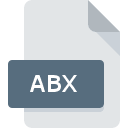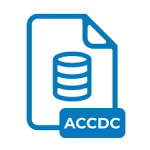.DAD File Extension

RemObjects Data Abstract Driver File
| Developer | RemObjects |
| Popularity | |
| Category | Database Files |
| Format | .DAD |
| Cross Platform | Update Soon |
What is an DAD file?
.DAD files are primarily linked to RemObjects Data Abstract, a framework for building flexible and scalable multi-tier database applications.
These files serve as drivers within the framework, facilitating communication between the client and the server components of the application.
Essentially, .DAD files encapsulate configuration settings and metadata necessary for the RemObjects Data Abstract infrastructure to interact with various database management systems (DBMS).
More Information.
RemObjects Data Abstract emerged in response to the challenges developers faced in building robust and flexible database applications.
Traditionally, developers encountered hurdles in managing data access, especially in distributed environments where multiple clients interacted with centralized databases.
The .DAD file extension became synonymous with Data Abstract’s configuration files, housing vital information regarding data access schemas, connection settings, and business logic.
Origin Of This File.
The .DAD file extension finds its roots intertwined with RemObjects Data Abstract, a framework designed to facilitate the development of distributed database applications.
Developed by RemObjects Software, this framework empowers developers to create scalable and efficient software solutions by abstracting the complexities of data access and communication.
File Structure Technical Specification.
The .DAD file, at its core, is an XML-based configuration file. Its structure revolves around defining various aspects of data access, including but not limited to:
- Connection Settings: Specifies details such as database server address, authentication credentials, and connection protocols.
- Schema Definition: Describes the structure of the underlying database, including tables, fields, relationships, and constraints.
- Business Logic: Embeds custom code or references external assemblies to enforce business rules and data validation.
- Remote Service Configuration: Configures the communication protocol and endpoints for remote data access.
This XML-based structure grants developers the flexibility to configure data access parameters dynamically, catering to diverse application requirements.
How to Convert the File?
Converting .DAD files to alternative formats or structures typically involve exporting and importing data schemas and configurations.
While direct conversion tools are specifically tailored for .DAD files might not be prevalent, developers can resort to manual or scripted methods to translate the contents of .DAD files into compatible formats.
- Exporting Data Schema: Extract the schema definition from the .DAD file using XML parsing libraries or text manipulation tools. Convert the extracted schema into a format compatible with the target platform or database system.
- Reconfiguring Connection Settings: Translate the connection settings specified in the .DAD file to match the requirements of the target environment. This may involve adjusting server addresses, authentication mechanisms, and communication protocols.
- Mapping Business Logic: Analyze and replicate the business logic embedded within the .DAD file using the preferred programming language or framework. Ensure compatibility with the target platform’s runtime environment.
Advantages And Disadvantages.
Advantages:
- Centralized Configuration: By consolidating data access settings in a single file, .DAD files streamline the deployment and maintenance of database applications.
- Scalability: The modular structure of .DAD files facilitates the scaling of applications, allowing for seamless integration of new data sources or modifications to existing schemas.
- Platform Independence: RemObjects Data Abstract supports multiple development platforms and databases, ensuring cross-platform compatibility and flexibility.
Disadvantages:
- Learning Curve: Mastering the intricacies of .DAD file configuration may require a steep learning curve for novice developers.
- Complexity: As applications grow in complexity, managing and troubleshooting .DAD files can become challenging, necessitating robust documentation and version control practices.
- Dependency: Applications relying heavily on .DAD files may face challenges when migrating to alternative data access frameworks or platforms, highlighting a degree of dependency on RemObjects technology.
How to Open DAD?
Open In Windows
- On Windows-based systems, .DAD files are typically opened using integrated development environments (IDEs) such as Microsoft Visual Studio or RemObjects Data Abstract for .NET.
Open In Linux
- While RemObjects provides support for Linux-based development, opening .DAD files on Linux systems may require the use of compatible IDEs or text editors capable of handling XML files.
Open In MAC
- Developers on macOS can leverage IDEs like Xcode or RemObjects Data Abstract for macOS to access and modify .DAD files.













